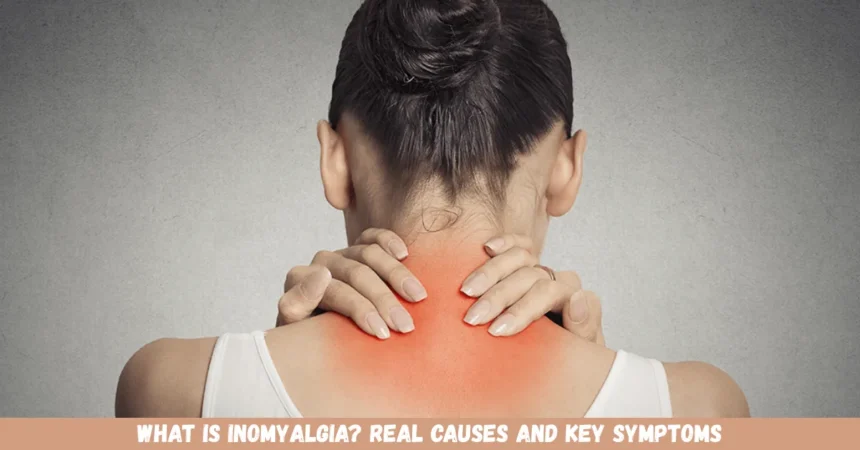Introduction to Inomyalgia
Inomyalgia is a term that may not be familiar to many, yet it affects countless people around the world. This condition can lead to a variety of physical and emotional challenges, but understanding it better can help those affected navigate their daily lives more effectively. If you’ve ever experienced unexplained pain or fatigue, you might find yourself resonating with what we’re about to explore. In this blog post, we’ll dive deep into inomyalgia—what it is, its causes and symptoms, as well as common misconceptions surrounding the condition. Whether you’re seeking knowledge for yourself or someone you care about, let’s embark on this journey together toward greater awareness and compassion for those living with inomyalgia.
Understanding the Causes of Inomyalgia
Inomyalgia is a complex condition with various underlying causes. It often stems from a combination of genetic, environmental, and psychological factors. People with a family history of chronic pain disorders may be more susceptible to developing this condition.
Stress plays a significant role as well. Emotional turmoil can trigger or exacerbate symptoms, making it crucial to manage stress effectively.
Additionally, certain infections have been linked to the onset of inomyalgia. Research suggests that viral illnesses might initiate symptoms in some individuals.
Lifestyle choices also contribute significantly. Poor sleep habits, lack of exercise, and unhealthy diets can all worsen the situation for those affected by inomyalgia.
Understanding these causes is vital for managing the condition effectively and improving quality of life.
Common Symptoms of Inomyalgia
Diagnosis and Treatment Options for Inomyalgia
Diagnosing inomyalgia can be a complex process. There’s no definitive test for this condition. Instead, healthcare professionals rely on patient history and symptom evaluation.
Usually, doctors will start with a thorough physical examination. They might ask about pain locations, duration, and triggers. This helps to rule out other potential causes of discomfort.
Once diagnosed, treatment options vary widely based on individual needs. Pain management often includes over-the-counter medications like ibuprofen or acetaminophen. Some patients benefit from prescription drugs tailored to their specific symptoms.
Physical therapy is another common approach. It focuses on improving mobility and reducing pain through targeted exercises.
Complementary therapies also play an essential role for many individuals. Techniques such as acupuncture or massage may provide relief and enhance overall well-being.
Mental health support should not be overlooked; counseling can help manage emotional stress related to living with inomyalgia.
Lifestyle Changes and Coping Mechanisms for Those with Inomyalgia
Living with Inomyalgia can be challenging, but certain lifestyle changes can make a significant difference.
Prioritize gentle exercise. Activities like yoga and swimming help maintain mobility without overexertion. Listen to your body’s cues.
Nutrition also plays a vital role. A balanced diet rich in fruits, vegetables, lean proteins, and whole grains can support overall well-being. Stay hydrated and consider anti-inflammatory foods.
Stress management is crucial too. Techniques such as mindfulness meditation or deep-breathing exercises can reduce anxiety levels, creating a calmer mindset.
Establishing a consistent sleep routine aids recovery. Quality rest allows the body to heal and rejuvenate itself more effectively.
Connect with others for support. Joining groups or forums dedicated to Inomyalgia fosters community understanding that reduces feelings of isolation while sharing coping strategies helps navigate daily challenges more easily.
Conclusion: Living a Full Life with Inomyalgia
Living with Inomyalgia can be a challenge, but it doesn’t have to define who you are. Many individuals successfully manage their symptoms, allowing them to lead fulfilling lives. Understanding your condition is the first step towards finding the right strategies for coping.
Implementing lifestyle changes like gentle exercise and stress management techniques can make a significant difference. Surround yourself with supportive friends and family who understand what you’re going through. Open communication about your experiences often leads to better understanding and support.
Don’t hesitate to seek professional help when needed; healthcare providers can offer valuable insights into effective treatment options tailored specifically for you. Remember, managing Inomyalgia is not just about treating symptoms—it’s also about fostering emotional resilience and maintaining a positive outlook on life.
Embrace each day as an opportunity to learn more about yourself while navigating this journey with Inomyalgia. Every small victory counts on the path toward living well despite any challenges that may arise.
It presents a range of symptoms that can vary from person to person. One of the most prominent signs is widespread pain. This discomfort often feels like a deep ache, impacting various muscle groups and joints.
Fatigue also plays a significant role in this condition. Many individuals report feeling exhausted even after sleep or rest. The fatigue may be overwhelming, affecting daily activities.
Cognitive challenges, sometimes referred to as “brain fog,” are common too. People may struggle with focus, memory recall, or finding words during conversations.
Sleep disturbances frequently accompany these symptoms. Individuals might have difficulty falling asleep or staying asleep through the night.
Other manifestations include headaches and sensitivity to touch or temperature changes. These factors can contribute to an overall sense of unease for those living with inomyalgia. Recognizing these signs early on can lead to better management strategies and support systems.
Misconceptions and Myths about Inomyalgia
It is often misunderstood, leading to several misconceptions that can hinder effective discussion and treatment. Many people believe it’s merely a psychological condition. In reality, it involves complex physical symptoms often rooted in underlying biological factors.
Another common myth is that inomyalgia only affects older adults. However, this condition can impact individuals of all ages, including children and young adults.
Some think it’s just an excuse for laziness or lack of motivation. This perception neglects the genuine pain and fatigue experienced by those affected.
Additionally, there’s a belief that inomyalgia is rare. While it may not be as well-known as other conditions, many people live with its challenges daily without proper recognition or understanding from others around them.
Dispelling these myths is crucial for fostering empathy and support for those navigating life with inomyalgia.




